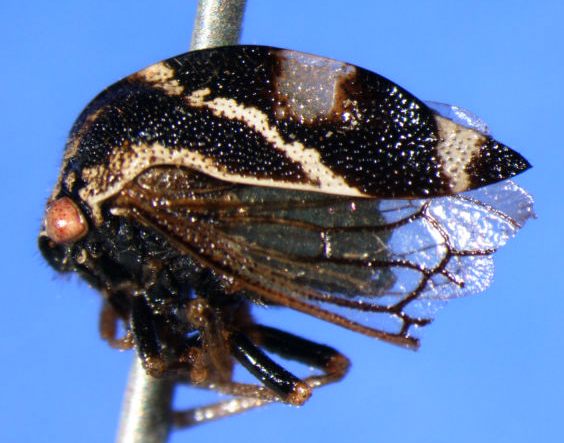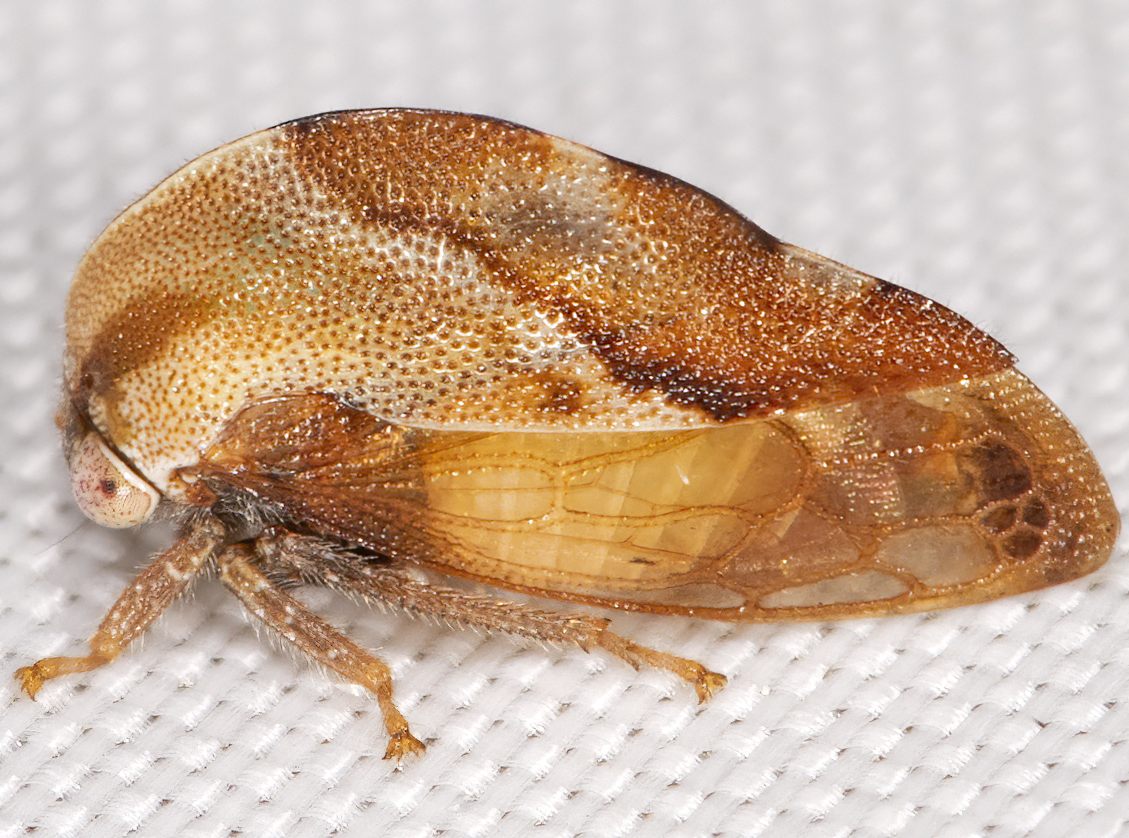
|
|
|
| synonym |
|
| description |
A brown to blackish species in which variation may result in individuals of each sex resembling the other. Males are dark, typically ranging from reddish testaceous to black, with prominent whitish vittae diagonally across the pronotum, with a thicker transverse band near the apex; the lateral margins of the pronotum closer to the head are also whitish. There is a prominent, clear hyaline patch on each side of the pronotum, above the vittae. The face is a pinkish testaceous color, and the underside of the body is black; legs are pale with the femora black above. The forewings are slightly enfumed, being dark fuscous at the tips. Females are yellowish to orange-brown, ranging to a dark brown color similar to some males, with whitish to yellowish-white vittae that are similar in extent to males; the central whitish line across the pronotum is edged with brown along the posterior margin. The tegmina is yellowish-hyaline with light brown tips. The underside of the thorax is ferruginous, the abdomen is flavous; the legs are yellowish with the femora marked above with brown. Adult males are 4-5 (up to 5.6 ) mm long, females are 5-6 mm and 2.8 mm wide. (Kopp & Yonke 1973) |
| distribution |
Eastern and central North America (FSCA) |
| abundance |
Rare, a couple records from the Piedmont and Coastal Plain. |
| seasonal_occurrence | |
| habitat |
|
| plant associates |
Laurel oak (Quercus laurifolia) (FSCA); also red oak, bur oak, black oak and white oak (Kopp & Yonke 1973). |
| behavior |
Can be attracted at night with a light.
To listen to the male courtship call for this genus, listen here. These courtship calls are not audible to the human ear, and the calls here are produced by recording the substrate vibrations that the treehoppers use to communicate through the plants themselves. The recorded call is then amplified so that it is now audible to human ears. Research has shown that treehoppers use vibrations to attract mates, to announce the discovery of a good feeding site, or to alert a defending mother to the approach of a predator (T.IM). |
| comments |
This species is most similar to and could be confused with Cyrtolobus fuliginosus, in particular the females of both species. However, there are subtle differences in the shape and pattern of the pronotum between the two species, with the pronotum of C. fuliginosus a bit more peaked and rounded than in discoidalis. Additionally, there is a clear hyaline patch located dorsally on the sides of the pronotum above the white line (more pronounced in males) in discoidalis; this patch is absent in fuliginosus. |
status |
[Native:]
[Introduced:]
[Extirpated:] | | list_type |
[Official:]
[Provisional:] |
| adult_id | Unmistakable and widely known Identifiable from good quality photos of unworn specimens
Identifiable from photos showing undersides, or other specialized views [e.g., legs, face]
Identifiable only by close inspection of structural features or by DNA analysis NULL |
| nymph_id | Unmistakable and widely known Identifiable from good quality photos, especially where associated with known host plants
Identifiable from close inspection of specimens or by DNA analysis
Identifiable only through rearing to adulthood NULL |
| G_rank |
|
| S_rank |
|
| rank_comments |
|
| tribe |
Smiliini |
| subgenus |
|
Species Photo Gallery for Cyrtolobus discoidalis No Common Name |
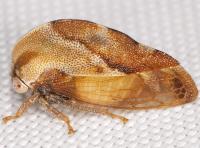 | Photo by: Mark Shields
Onslow Co.
Comment: female | 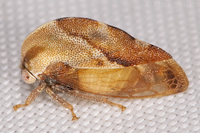 | Photo by: Mark Shields
Onslow Co.
Comment: |
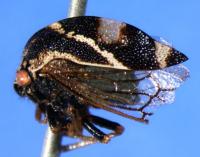 | Photo by: Matt Wallace
Out Of State Co.
Comment: male and female | 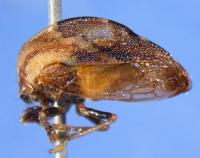 | Photo by: Matt Wallace
Out Of State Co.
Comment: male and female |
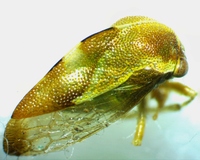 | Photo by: Ken Kneidel
Mecklenburg Co.
Comment: 5.1 mm female trapped in Tanglefoot on a a tree band on Quercus phellos | 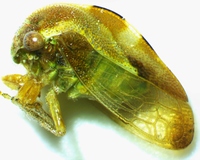 | Photo by: Ken Kneidel
Mecklenburg Co.
Comment: 5.1 mm female trapped in Tanglefoot on a a tree band on Quercus phellos |
 | Photo by: Ken Kneidel
Mecklenburg Co.
Comment: 5.1 mm female trapped in Tanglefoot on a a tree band on Quercus phellos | 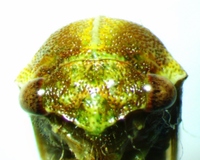 | Photo by: Ken Kneidel
Mecklenburg Co.
Comment: 5.1 mm female trapped in Tanglefoot on a a tree band on Quercus phellos |
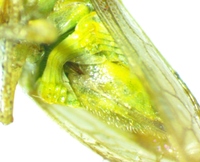 | Photo by: Ken Kneidel
Mecklenburg Co.
Comment: 5.1 mm female trapped in Tanglefoot on a a tree band on Quercus phellos | 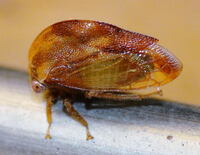 | Photo by: Kyle Kittelberger, Brian Bockhahn, Paul Scharf
Halifax Co.
Comment: |
 | Photo by: Erich Hofmann
Craven Co.
Comment: https://www.inaturalist.org/observations/76957759 | 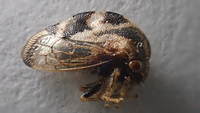 | Photo by: Erich Hofmann
Craven Co.
Comment: https://www.inaturalist.org/observations/76957759 |
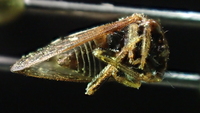 | Photo by: Erich Hofmann
Craven Co.
Comment: https://www.inaturalist.org/observations/76957759 |  | Photo by: Erich Hofmann
Craven Co.
Comment: https://www.inaturalist.org/observations/76957759 |
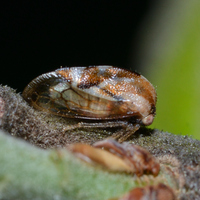 | Photo by: Margarita Lankford
Orange Co.
Comment: https://www.inaturalist.org/observations/209865942 | 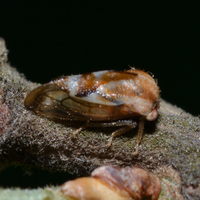 | Photo by: Margarita Lankford
Orange Co.
Comment: https://www.inaturalist.org/observations/209865942 |
|

 »
»